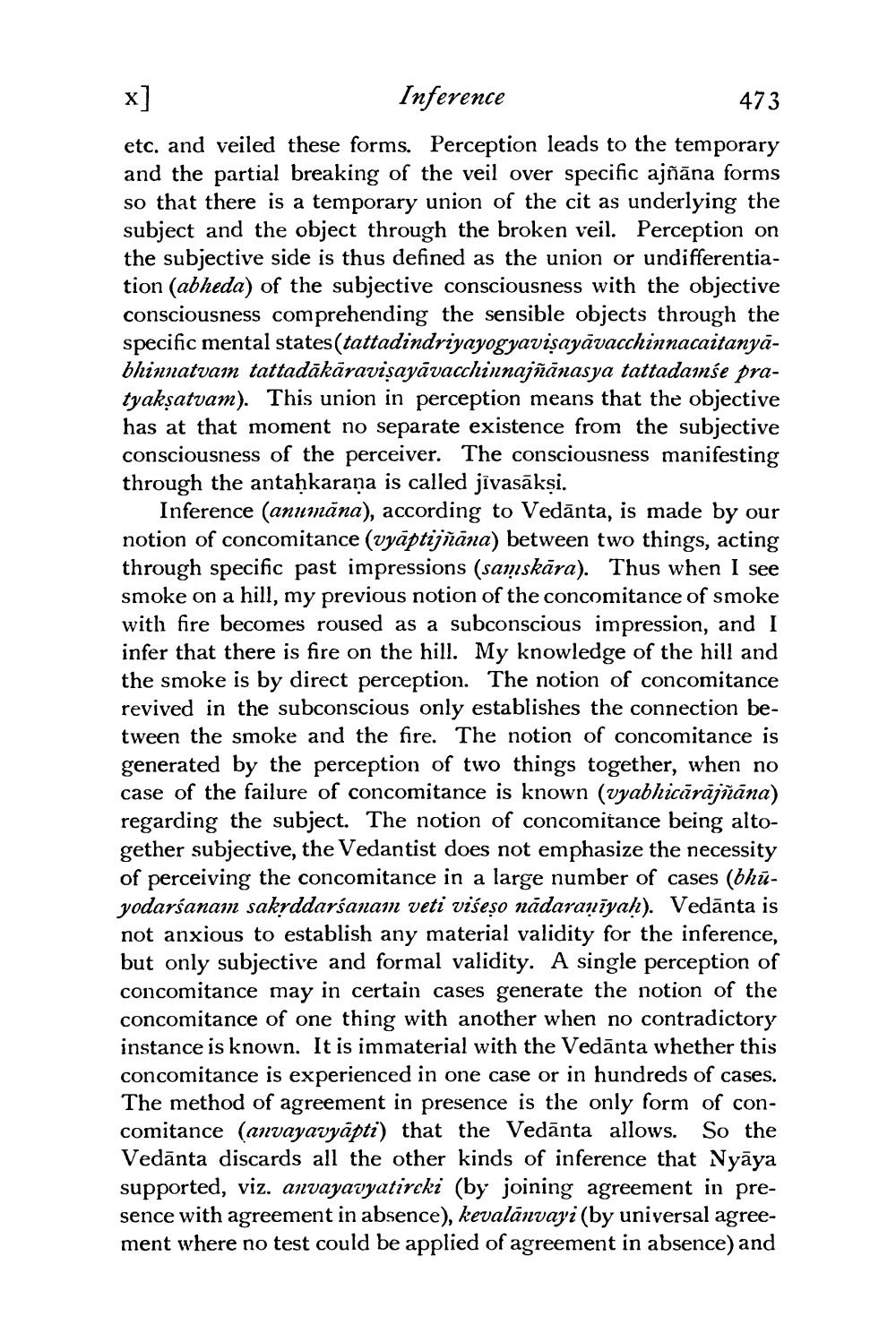________________
Inference
473
etc. and veiled these forms. Perception leads to the temporary and the partial breaking of the veil over specific ajñāna forms so that there is a temporary union of the cit as underlying the subject and the object through the broken veil. Perception on the subjective side is thus defined as the union or undifferentiation (abheda) of the subjective consciousness with the objective consciousness comprehending the sensible objects through the specific mental states (tattadindriyayogyavisayāvacchinnacaitanyabhinnatvam tattadākāravisayāvacchinnajñānasya tattadanse pratyaksatvam). This union in perception means that the objective has at that moment no separate existence from the subjective consciousness of the perceiver. The consciousness manifesting through the antaḥkarana is called jīvasāksi.
Inference (anumāna), according to Vedānta, is made by our notion of concomitance (vyāptijñāna) between two things, acting through specific past impressions (samskāra). Thus when I see smoke on a hill, my previous notion of the concomitance of smoke with fire becomes roused as a subconscious impression, and I infer that there is fire on the hill. My knowledge of the hill and the smoke is by direct perception. The notion of concomitance revived in the subconscious only establishes the connection between the smoke and the fire. The notion of concomitance is generated by the perception of two things together, when no case of the failure of concomitance is known (vyabhicārajñāna) regarding the subject. The notion of concomitance being altogether subjective, the Vedantist does not emphasize the necessity of perceiving the concomitance in a large number of cases (bhūyodarśanam sakrddarśanam veti višeso nādaranīyah). Vedānta is not anxious to establish any material validity for the inference, but only subjective and formal validity. A single perception of concomitance may in certain cases generate the notion of the concomitance of one thing with another when no contradictory instance is known. It is immaterial with the Vedānta whether this concomitance is experienced in one case or in hundreds of cases. The method of agreement in presence is the only form of concomitance (anvayavyapti) that the Vedānta allows. So the Vedānta discards all the other kinds of inference that Nyāya supported, viz. anvayavyatircki (by joining agreement in presence with agreement in absence), kevalānvayi (by universal agreement where no test could be applied of agreement in absence) and




